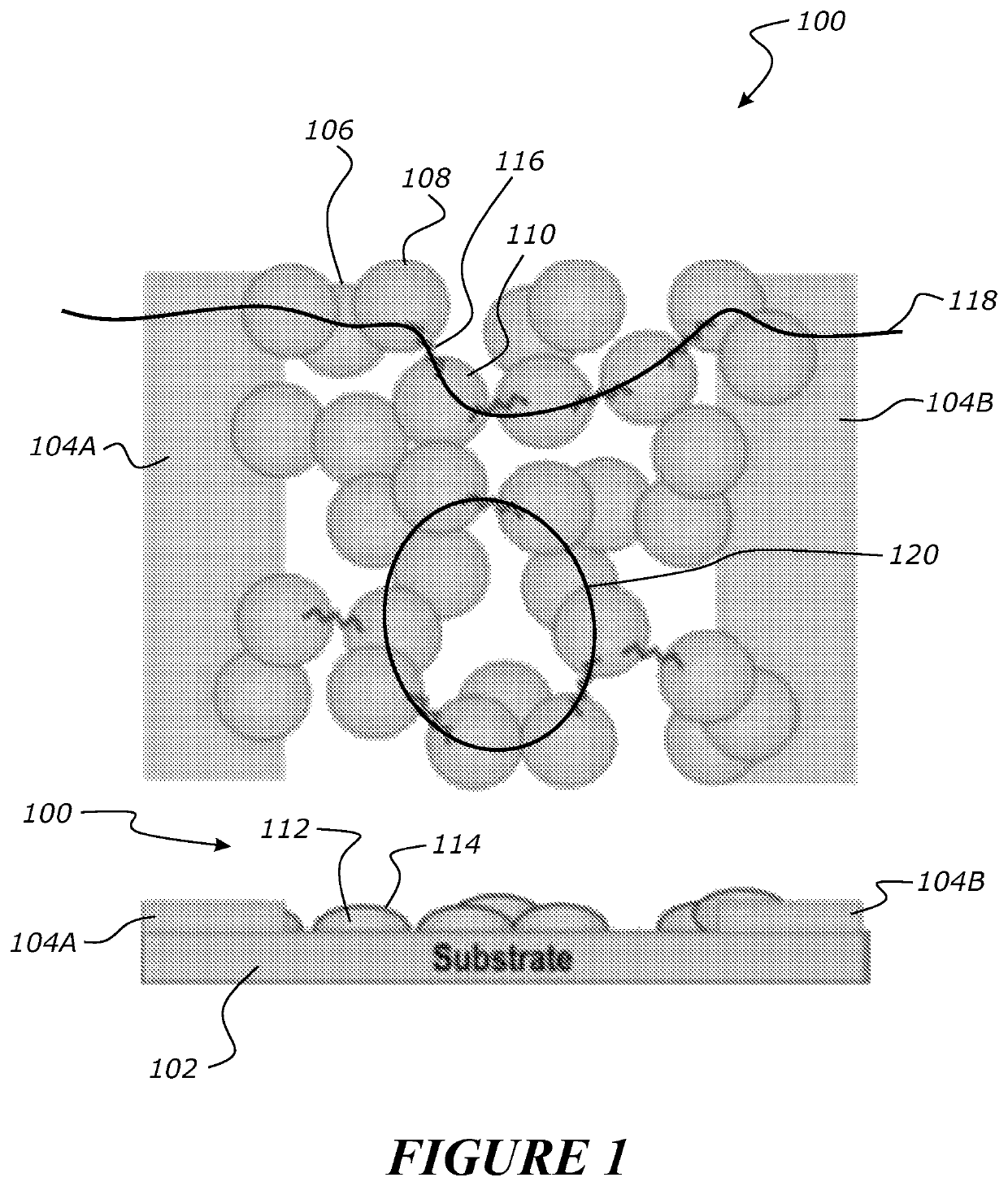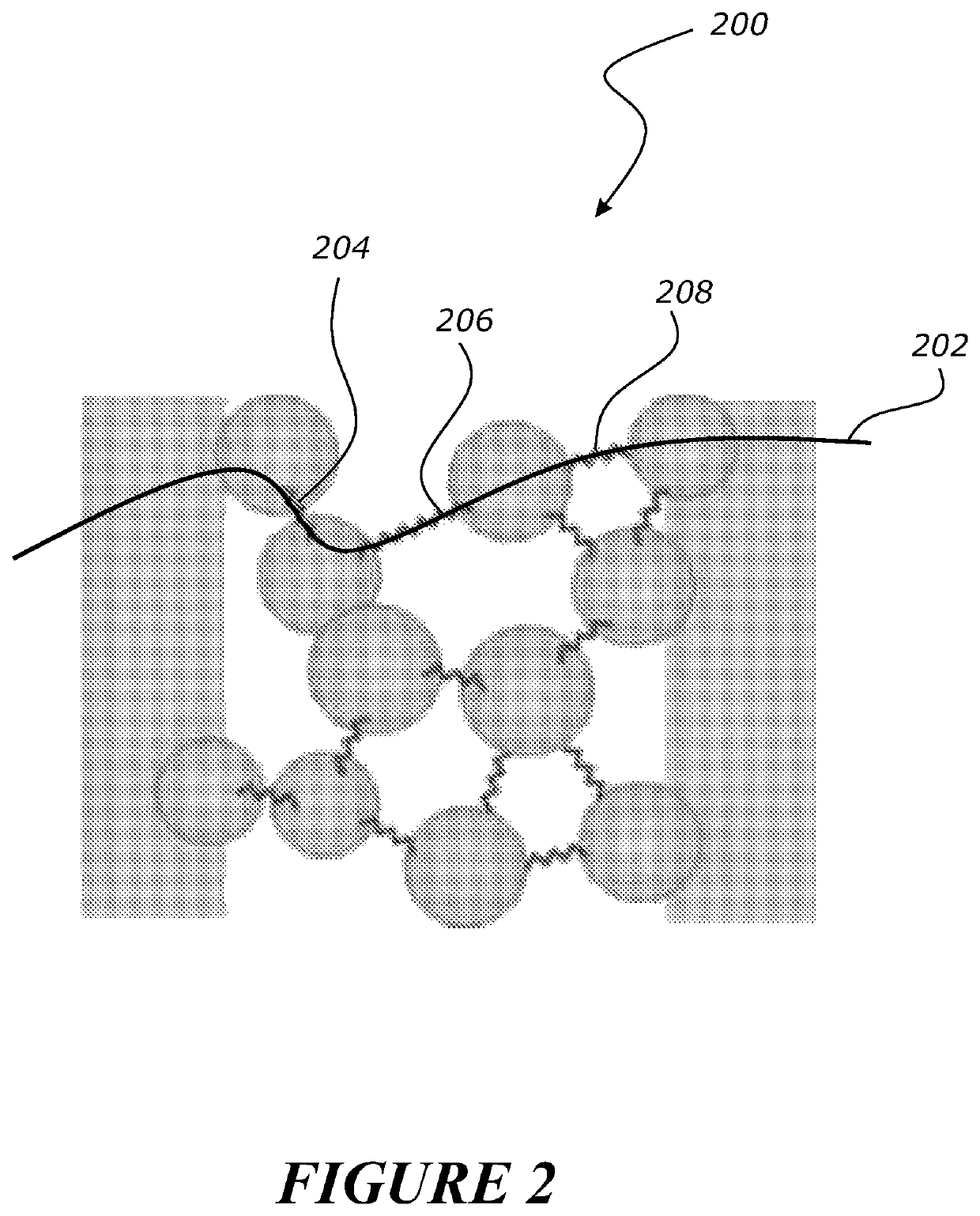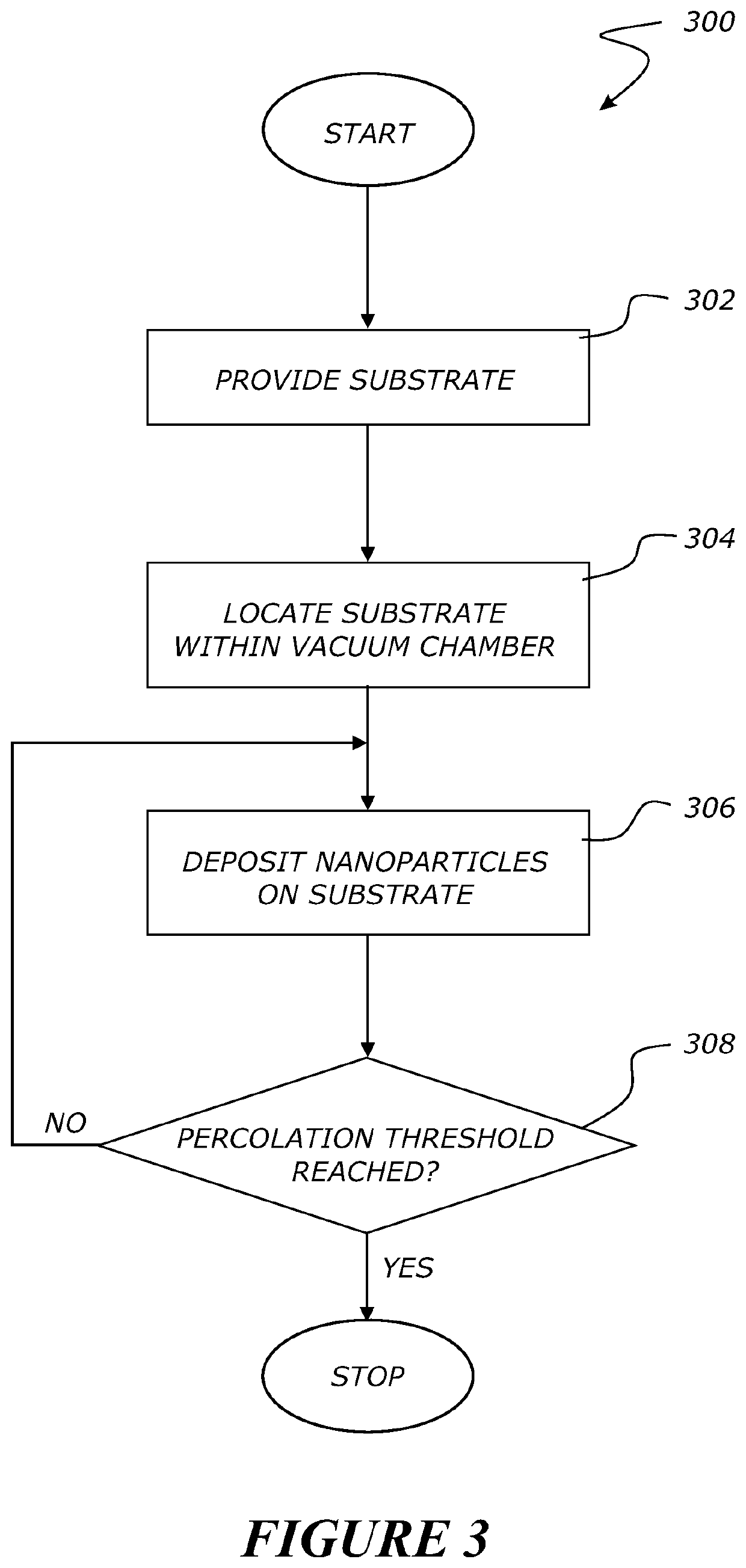Neuromorphic network
a percolating network and neuromorphic technology, applied in the field of neuromorphic percolating networks, can solve the problems of exponential increase in research and development costs for every new process-line, uneconomical and unsustainable, and approaching the dimensions of physical transistors
- Summary
- Abstract
- Description
- Claims
- Application Information
AI Technical Summary
Problems solved by technology
Method used
Image
Examples
Embodiment Construction
[0114]‘Atomic scale’ as used herein in relation to an atomic scale conducting wire represents an average width of a wire of between 1 and 5 atoms, preferably 1 to 3 atoms.
[0115]‘Coverage’ or ‘Surface Coverage’ as used herein represents a fraction of the area of the substrate that is covered by deposited particles.
[0116]A ‘percolation threshold’ is the least occupancy of the available sites in percolation theory at which a connected structure exists which spans the system and / or allows electrical conduction across the system.
[0117]‘Memristor’ as used herein means an electrical device that exhibits two conductance states, the state at any given time resulting from the previous history of the inputs. Memristive devices include, but are not limited to, switching devices based on movement of impurities / defects in semiconducting or insulating matrices (e.g. oxygen vacancies in TiO2), atomic switches (either those relying on the electrochemical reduction of Ag2S or Cu2S to form atomic scal...
PUM
| Property | Measurement | Unit |
|---|---|---|
| diameters | aaaaa | aaaaa |
| surface roughness | aaaaa | aaaaa |
| RMS surface roughness | aaaaa | aaaaa |
Abstract
Description
Claims
Application Information
 Login to View More
Login to View More - R&D
- Intellectual Property
- Life Sciences
- Materials
- Tech Scout
- Unparalleled Data Quality
- Higher Quality Content
- 60% Fewer Hallucinations
Browse by: Latest US Patents, China's latest patents, Technical Efficacy Thesaurus, Application Domain, Technology Topic, Popular Technical Reports.
© 2025 PatSnap. All rights reserved.Legal|Privacy policy|Modern Slavery Act Transparency Statement|Sitemap|About US| Contact US: help@patsnap.com



